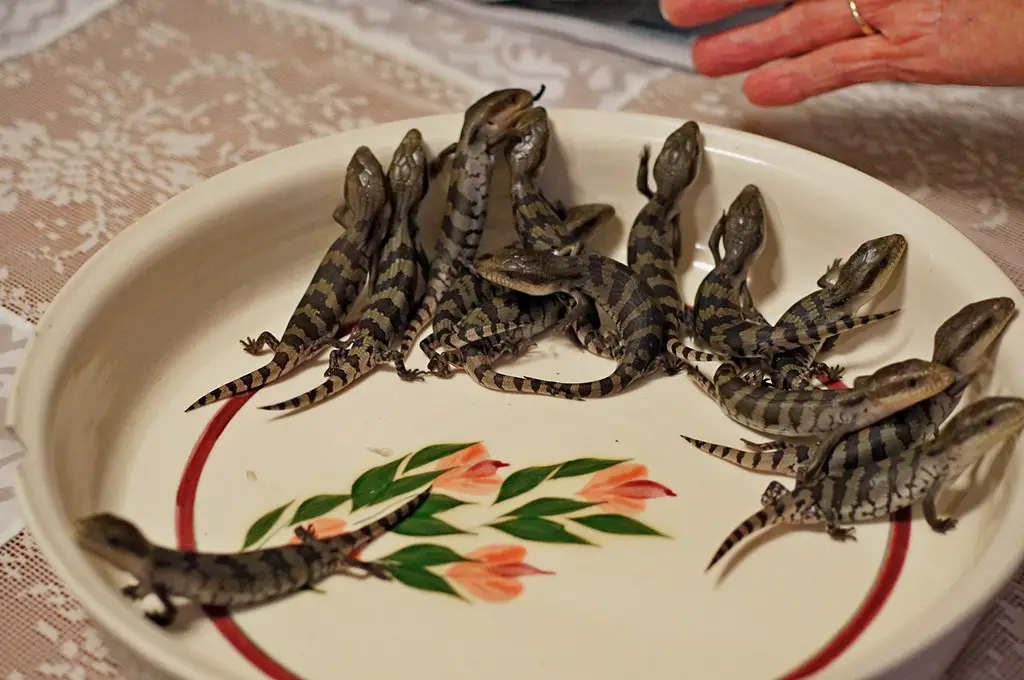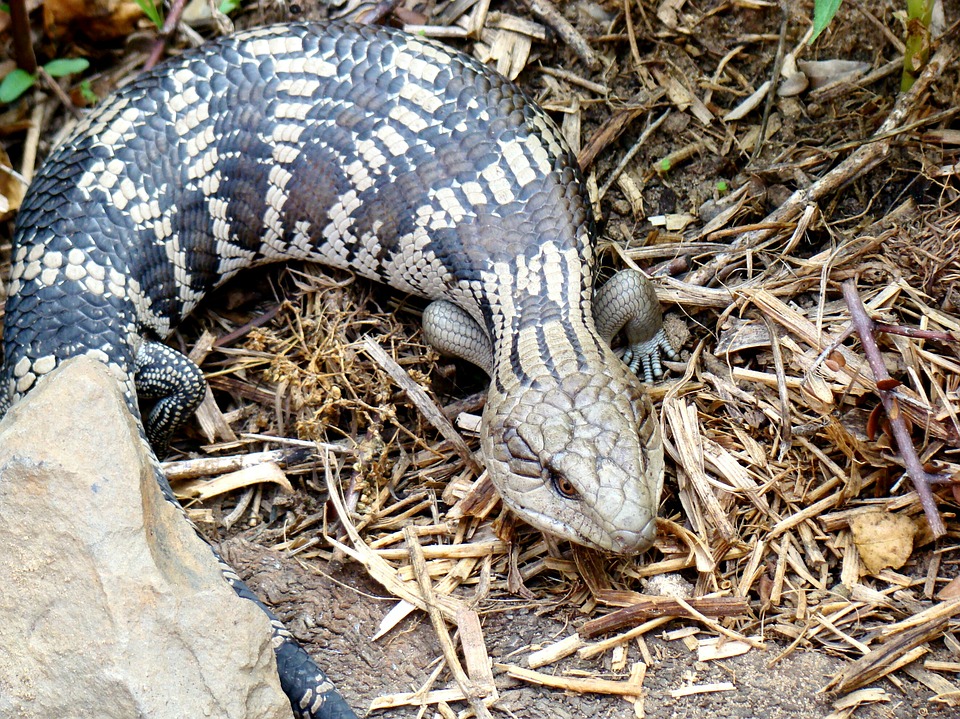There are a lot of questions concerning blue tongue skinks reproduction. Blue tongue skinks are reptiles, and hence we all expect them to lay eggs.
But, do blue tongue skinks lay eggs? In this article, we are going to answer five frequently asked questions about blue tongue skinks reproduction.
But before we answer these questions, it is worth noting that, blue tongue skinks are ovoviviparous. Therefore, it means that they do not lay eggs, but rather give birth to their young ones.
This article has been reviewed by Dr. Dilber. Read more about our knowledge control process here.
Contents
Blue Tongue Skinks give eggs or live births?
Unlike other species of lizards, Blue tongue skinks are ovoviviparous. They lay eggs inside their bodies to promote the development of embryos and hatch inside the body to give birth to babies.

When do Blue Tongue Skinks Start To Give Birth?
Blue tongue skinks have a breeding period. However, the breeding season also depends on the location of the blue tongue skinks.
For example… In the northern hemisphere like the USA, Canada, Europe, etc, its breeding season is around March to April.
While in the Southern hemisphere like South America, and Africa it is around September to November.
During this period, the blue tongue skink will be going through a process called brumation. The process is very similar to hibernation as the skinks are inactive during this period.
Starting from Mid-February, the blue tongue skinks begin to warm up, gradually becoming active. It is the best time to introduce a male partner so that mating can start. When mating, the female is usually very aggressive, and sometimes the blue tongue skinks experience critical injuries.
It is critical to remove all substrates during the mating season if you are breeding the skinks in captivity. The male’s hemipenis is fully exposed during mating, and hence it is good to make sure that nothing can stick to it.
New to blue tongue skink? Check out the blue tongue skink care sheet now! We had listed out all the things you need to know about blue tongue skinks as pets. Check it now!
The female shows corporation by lifting its tails to pave the way for the penetration.
The process is likely to take 30 seconds to a few minutes. Don’t separate the skinks if you see the male biting the female’s neck. After mating, the blue tongue gives birth to their young ones 3-5 months later.
Can My Blue Tongue Skinks Reproduce Without Mating?

Like I mentioned before, blue tongue skinks do not lay eggs. Other species of lizards through a process known as pathogenesis can lay eggs without mating. One of the rare species known as the Komodo dragon, found in Indonesia can lay eggs that can produce offspring without mating.
In 2006, according to Chester Zoo, the first case of pathogenesis was seen in a female Komodo dragon known as Florida. When a DNA test was conducted on her viable eggs, only her DNA was seen.
However, the offspring that came fourth were only males. The males can be their mates later when they are older.
Nevertheless, blue tongue skins cannot breed without mating. It is, therefore, not possible for your blue tongues skink to lay eggs or even breed without mating.
If you are considering breeding your blue tongue skink in captivity, you should get her a male counterpart during the mating season.
How Often Do Blue Tongue Skinks Lay Infertile Eggs?
Blue tongue skinks are ovoviviparous animals, and hence they give birth and not lay eggs. However, in some rare situations, they give birth to slugs, which might be what you refer to as unfertilized eggs. Sometimes the blue tongue skinks give birth to slugs but later give birth to live young ones.
According to BTS, it is possible that the egg was fertilized, but they fail to form cotyledon to the mother. Even so, the blue skink can give birth to healthy babies.
In captivity, you should consult your pet-vet if you notice your blue tongue skink producing an egg-like embryo for proper diagnosis.
So, How Many Live Births Do Blue Skinks Lay?

Blue tongue skinks being ovoviviparous; instead of laying eggs, they keep the eggs inside their bodies until they hatch. The skinks nourish their young ones through their bodies via primitive placenta that develops between mother and embryo.
New to blue tongue skink? Check out the blue tongue skink care sheet now! We had listed out all the things you need to know about blue tongue skinks as pets. Check it now!
After blue tongue skink finish mating, the babies are born 3-5 months later. One skink can give birth to 10 to 15 babies in one reproductive cycle. But sometimes, they can lay up to 20. The blu -tongue skinks reproduce once a year.
The babies first feed on the placenta and membrane at birth. Placenta and membrane is the first nourishment of blue tongues skink babies.
A few days later, the babies shed their first skin. Although blue tongue skinks are hardy and can survive on any diet, you should consider feeding your baby blue tongue skink with a balanced diet.
Blue tongue skinks are omnivorous, so you should feed them with plants, meat, and insects. However, it is not advisable to feed babies with live food. You should house baby blue tongue skinks in a separate cage from their adults.
How Long Does A Blue Skink Take To Reproduce?

Late September is usually when the breeding season for blue tongue skinks begins.
The males start looking for a ready female. It’s often a hazardous season for the male. Most of them don’t survive during this period. The breeding goes on through October and November.
Pregnant blue tongue skinks then start basking more regularly in November in search of constant body temperature. During pregnancy, constant body temperature is critical to regulating the embryo development rate.
In late January, the blue tongue skinks give birth to their young ones. Thus, blue skinks will take approximately 3-5 months before they give birth after mating.
Even though the blue skink might give birth to many babies, only a few survive. The surviving blue tongue babies grow up very quickly and by February, they are big enough to be seen outside foraging.
Conclusion
Female blue tongue skinks can be overly aggressive during mating. Aggressive behavior towards the male could signify that the female is not ready for mating. And in most cases, the female is not ovulating.
It is, therefore, critical to understanding your blue tongue skink during mating for better results. However, you should not be discouraged. Blue tongue skinks survive and breed very well in captivity, and hence, the hustle is rewarding.
